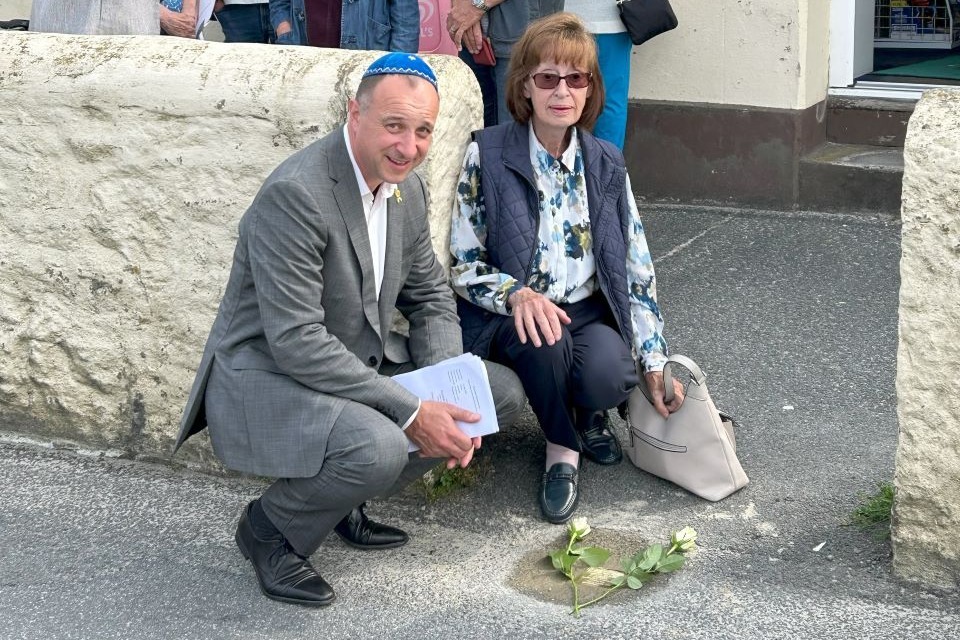On 25 and 26 July, 35 Stolpersteine were laid in the Channel Islands: 20 in Jersey and 15 in Guernsey. These follow the first and only UK Stolperstein, laid in May 2022 in Golden Square, London, for Jewish Dutch woman Ada Van Dantzig.
Stolpersteine were created by the studio of German artist Gunter Demnig, and are 10cm by 10cm concrete cubes topped by brass caps, stating the name and life dates of victims and survivors of Nazism. They are laid into pavements outside the last freely-chosen address of those they commemorate before their arrest or deportation. Over 106,000 have been laid across mainland Europe. ‘Stolpersteine’ translates as ‘stumbling stone’, but these stones are laid flush with the surface of pavements. You ‘stumble’ across them, as Demnig puts it, ‘with your heart and head.’
Dr Gilly Carr of the University of Cambridge, and a member of the UK’s delegation to the International Holocaust Remembrance Alliance, introduced the Stolpersteine project to the Channel Islands.
The Stolpersteine in Jersey were laid, in all but two instances, for survivors to ensure no crossover with the purpose of other memorials in the island which commemorate the 21 women and men who died in Nazi prisons, forced labour camps and concentration camps. Chris Addy of Jersey Heritage, who oversaw the stone laying in the larger island, said:
“The Jersey stones will raise awareness of Islanders who were persecuted for their Jewish heritage or went into hiding for that reason; those convicted of acts of resistance and defiance, including those caught while attempting to escape from the island; individuals sent to Alderney as forced labourers; or interned in Germany for being English born.”
In Guernsey, the Stolpersteine were laid to eight Islanders who died in Nazi prisons and camps for acts of resistance and defiance; three Jewish women without protective British citizenship, deported to France in 1942 and later murdered in Auschwitz; and a Viennese-born Jewish islander with British citizenship who was deported to civilian internment camps and survived. Another stone was laid in memory of Frank Falla, who survived Nazi prisons and later campaigned for compensation for all Channel Islanders who were victims of Nazism. The final two stones were laid for Frank Tuck and Kingston Bailey, two of 16 policemen who were deported to Nazi camps in 1942 for stealing food from German stores and distributing it to starving Islanders. None of the 16 men have had their sentences overturned or received an official apology from the States of Guernsey.
Helen Glencross, Head of Heritage Services in Guernsey, who organised the installations in Guernsey, said:
“Guernsey Museums is honoured to be part of the Stolpersteine project. Logistically it has been challenging and I am very grateful to all those who have assisted. I hope that the Stolpersteine will raise awareness with islands and visitors about those who were victims and survivors of Nazism during the Second World War.”
On bringing the project to the Channel Islands, Dr Gilly Carr said:
“Each stone is so eloquent; they are quietly defiant. They say ‘you deported me but I’m back home and here to stay. I belong here.’ They also speak of pride and of acknowledgement that those deported did no wrong. I am proud to have been involved in this project and I hope it won’t be too long till we can bring more Stolpersteine to the Channel Islands.”



